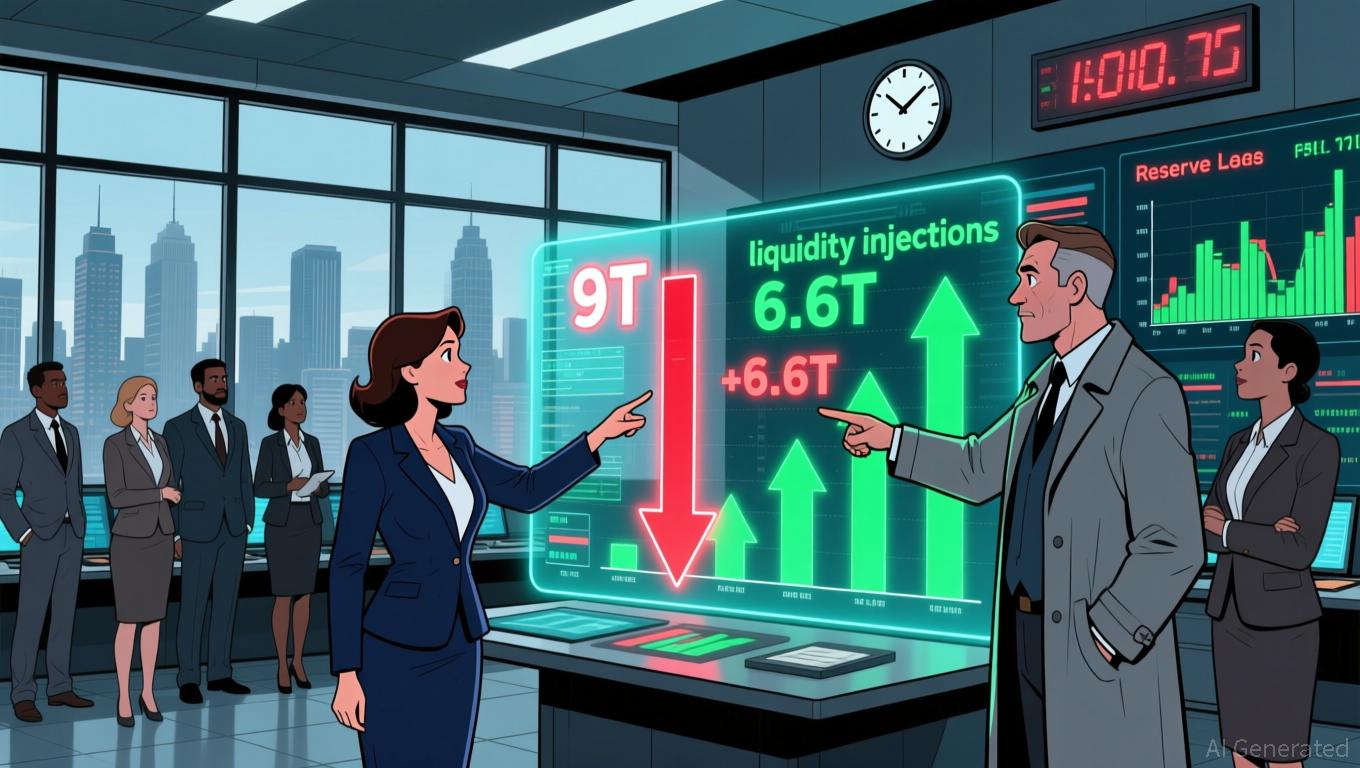Fed Faces a Pivotal Choice: Managing Liquidity or Controlling Inflation
- Fed may expand balance sheet to address liquidity needs amid shrinking reserves, signaling potential end to 3-year QT program. - Officials pause QT as $6.6T reserves deemed "somewhat above ample," but warn of risks from inflation above 2% target and market volatility. - Governor Mester cautions against aggressive rate cuts, citing economic rebound risks and fiscal/regulatory factors boosting 2026 growth outlook. - External pressures including government shutdown delays and stablecoin demand growth compli
The Federal Reserve is at a critical crossroads as it works to strike a balance between ensuring sufficient liquidity and keeping inflation in check. In a recent speech, John Williams, President of the New York Fed, discussed the possibility that the central bank could soon move to increase its balance sheet—a step that would mark a departure from its prolonged period of quantitative tightening (QT).

The Fed’s recent decision to halt QT, announced last week, signals its view that current reserve levels are adequate to keep money markets steady without providing too much stimulus. Williams stated that the three-year process of reducing the balance sheet “has gone as planned,” but he also emphasized the need to keep a close watch on market shifts to identify when reserves might reach “ample” territory
Elsewhere, Federal Reserve Governor Loretta Mester has urged caution regarding aggressive rate cuts in December, suggesting that the economy is set for a recovery in early 2026. Mester cited factors such as government spending, regulatory adjustments, and the delayed impact of earlier rate hikes as key influences. However, she cautioned that further rate reductions could risk overheating the economy, especially since inflation remains above the Fed’s 2% goal. Her remarks reflect a broader hesitancy among policymakers, who have indicated a preference for a gradual approach to loosening policy
The Fed’s efforts are further complicated by outside influences, including geopolitical tensions and unpredictable markets. For example, the recent U.S. government shutdown interrupted the release of economic data, making the Fed’s policy decisions more challenging. Analysts at First Abu Dhabi Bank observed that such disruptions could prompt the Fed to postpone rate cuts in December to maintain its policy credibility
Market responses to these developments have been varied. While the Fed’s pause in QT has brought some stability to money markets, digital assets have seen significant outflows, with
As the Fed looks ahead to its next policy meetings, attention will remain on how effectively it can address these complex challenges while upholding its dual mandate of price stability and full employment. The way forward will depend on ongoing evaluations of reserve requirements, market dynamics, and the shifting economic environment.
Disclaimer: The content of this article solely reflects the author's opinion and does not represent the platform in any capacity. This article is not intended to serve as a reference for making investment decisions.
You may also like
Edge & Node Joins LF Decentralized Trust
Moca Network Expands AIR Shop with 40 Million Tickets
Historic Moment Has Arrived: XRP Spot ETF Will Soon Begin Trading – Here’s the Date and Time
TD Cowen Explains Bull and Bear Scenario for Bitcoin: Shares Price Target for Both!